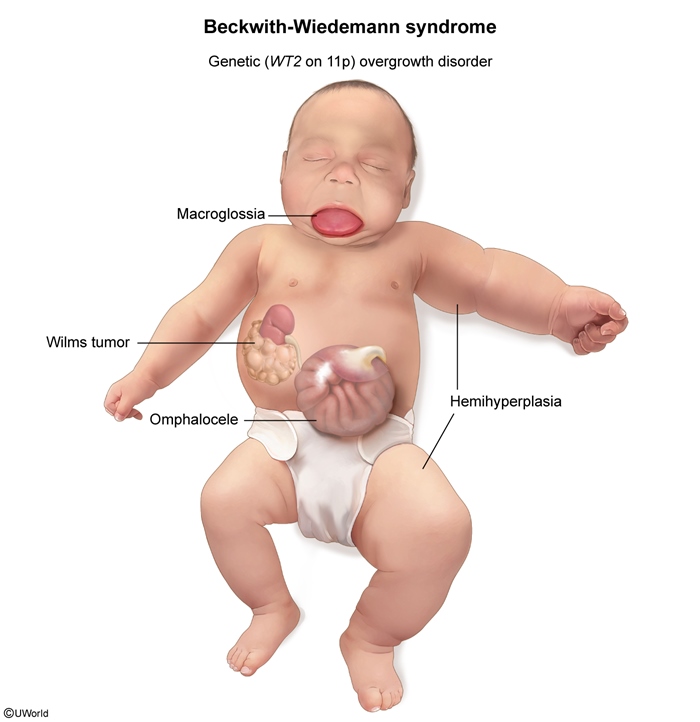Beckwith-Wiedemann Syndrome
Article Sections
Introduction
Beckwith-Wiedemann syndrome (BWS) is an imprinting disorder characterized by overgrowth and an increased risk for embryonal tumors. BWS is associated with genetic or epigenetic modifications affecting chromosome 11p15.5. BWS classically presents with macrosomia, macroglossia, and omphalocele.
Pathogenesis
BWS results from dysregulated imprinting at the chromosome 11p15.5 locus. Normally, both paternally and maternally inherited alleles of a gene are expressed. However, only certain genes are imprinted, which involves a series of epigenetic modifications that prevent expression of the paternally or maternally inherited allele (Figure 1). Therefore, imprinted genes are expressed monoallelically. Imprinting is a highly regulated process, and, in cases of BWS, dysregulated imprinting alters the expression of certain genes involved in cell growth and proliferation. Specifically, the chromosome 11p15.5 locus contains:
Continue Learning with UWorld
Get the full Beckwith-Wiedemann Syndrome article plus rich visuals, real-world cases, and in-depth insights from medical experts, all available through the UWorld Medical Library.
Figures

